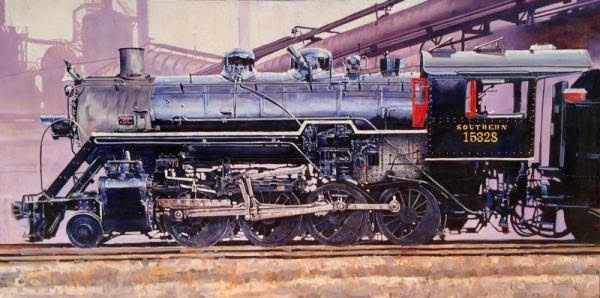An artist can get boxed in commercially if his style is distinctive and he is successful. Clients or buyers can be willing to pay good money for a portrait or any other sort of painting by a famous artist provided that it has the characteristic look of that artist's work. This can be a good thing for the artist because it keeps starvation away. But if he is itching to try out some different styles, he either has to do it in the form of "personal" paintings or else expect a long period of training buyers to accept a new style.
I have no idea what Kees van Dongen (1877-1968) had on his mind once he attained commercial success with stylized paintings of women featuring exaggeratedly large eyes outlined in dark paint. He was perfectly capable of painting in a traditional manner and probably could have gone even further in a modernist direction than he already had, so there were creative options. On the other hand, he enjoyed having money and loved to entertain fellow artists and others, so he continued to paint in the van Dongen style, but within a range of variations. Examples of his paintings that edged in the representational direction are shown below.
I wrote about van Dongen here, and here is a biographical sketch.
Gallery
Le Coquelicot
This is one of van Dongen's most famous paintings in his classic style.
Arletty - c. 1931
Arletty was a singer and movie star.
Jean McKelvie Sclater-Booth
No van Dongen dark eye outlines here, but the general treatment is clearly from his brush.
La femme au canapé - 1930
Even further removed from his style; only the handling of the dress suggests van Dongen.
Le sphinx - 1925
Again the dress is the stylistic tip-off, the face and visible body bits being rendered quite tightly (for van Dongen).
LouLou - c. 1924
More in the van Dongen vein, especially the large eyes.
Mme Marie-Thérèse Raulet
A bit of his old Fauve color treatment, but otherwise largely conventional.
Mme T
More crisply done than usual, but T's arms seem too large.
portrait of woman with long hair
Unlike the previous paintings, this was probably done after the 1930s and has few van Dongen traces.
I have no idea what Kees van Dongen (1877-1968) had on his mind once he attained commercial success with stylized paintings of women featuring exaggeratedly large eyes outlined in dark paint. He was perfectly capable of painting in a traditional manner and probably could have gone even further in a modernist direction than he already had, so there were creative options. On the other hand, he enjoyed having money and loved to entertain fellow artists and others, so he continued to paint in the van Dongen style, but within a range of variations. Examples of his paintings that edged in the representational direction are shown below.
I wrote about van Dongen here, and here is a biographical sketch.
Le Coquelicot
This is one of van Dongen's most famous paintings in his classic style.
Arletty - c. 1931
Arletty was a singer and movie star.
Jean McKelvie Sclater-Booth
No van Dongen dark eye outlines here, but the general treatment is clearly from his brush.
La femme au canapé - 1930
Even further removed from his style; only the handling of the dress suggests van Dongen.
Le sphinx - 1925
Again the dress is the stylistic tip-off, the face and visible body bits being rendered quite tightly (for van Dongen).
LouLou - c. 1924
More in the van Dongen vein, especially the large eyes.
Mme Marie-Thérèse Raulet
A bit of his old Fauve color treatment, but otherwise largely conventional.
Mme T
More crisply done than usual, but T's arms seem too large.
portrait of woman with long hair
Unlike the previous paintings, this was probably done after the 1930s and has few van Dongen traces.
































+-+1909-10.jpg)









.jpg)

































.jpg)






























%2B-%2B1936-37.jpg)








































%2B-%2B1870-73%2Bcirca.jpg)

%2B-%2Bc.1872-73.jpg)

%2B-%2B1892-95.jpg)





















